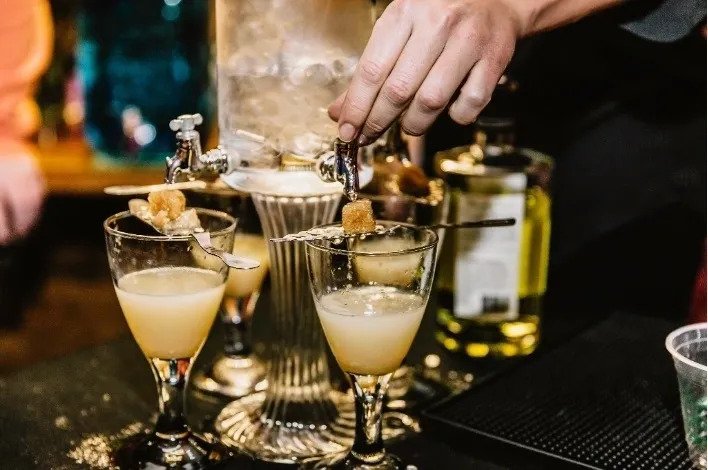Absinthe has long been the spirit synonymous with mystique and fascination, casting a spell over humanity throughout the ages. This verdant concoction has woven a tale of romance and contention, its allure heightened by its shadowed past and romanticised narratives. Step into the enthralling realm of absinthe, a passage through taste, legend, and the allure of the prohibited. Originating in the late 18th century Switzerland, absinthe crossed territories swiftly, charming the intellects, creatives, and the unconventional spirits of France. The charismatic ritual associated with its consumption and its formidable strength added layers to its irresistible charm, rendering it as enchanting as the liquid itself.
Known as “La Fée Verte” or “The Green Fairy,” absinthe was reputed to be a hallucinogenic elixir and a wellspring of creative inspiration, earning the favor of iconic artists such as Van Gogh, Toulouse-Lautrec, and Oscar Wilde. The verdant spirit was the lifeblood of Parisian cafes and bars, infusing the city with its speculative mystical properties. So, what concocts this emerald temptress? Absinthe is distilled predominantly from wormwood, anise, and fennel, with thujone in wormwood contributing to its hallucinogenic fame. However, scientific exploration posits that the effects attributed to absinthe are more correlated with its high alcohol concentration rather than thujone.
Despite its magnetic appeal, absinthe’s golden era in the late 19th century faced stern resistance. Accusations of hallucinogenic properties and the burgeoning temperance movement culminated in the prohibition of absinthe in multiple nations, including the US and France. This proscription only magnified absinthe’s mystique, rendering it the elusive gem of the spirit world. Fast-tracking to the 21st century, absinthe is witnessing a reawakening, re-emerging from the shadows with bans being lifted and a resurging curiosity in its distinctive flavor and storied past. Aficionados today revel in the ceremonious preparation of absinthe, a delicate cascade of cold water over a sugar cube placed atop a bespoke spoon over a glass of absinthe, unveiling the characteristic creamy opalescence termed “the louche.”
As absinthe renounces its renegade label, the echoes of its vibrant bohemian history continue to linger. In contemporary times, it is revered not only for its intricate botanical notes but also for its illustrious position in cocktail lore. To explore absinthe is to waltz through a multidimensional experience with a spirit that transcends its liquid form. It is a historical relic, a masterful concoction, a fount of artistic stimulation, and a verdant mystery yearning to be deciphered. So, are you prepared to succumb to the enticement of the green fairy?



